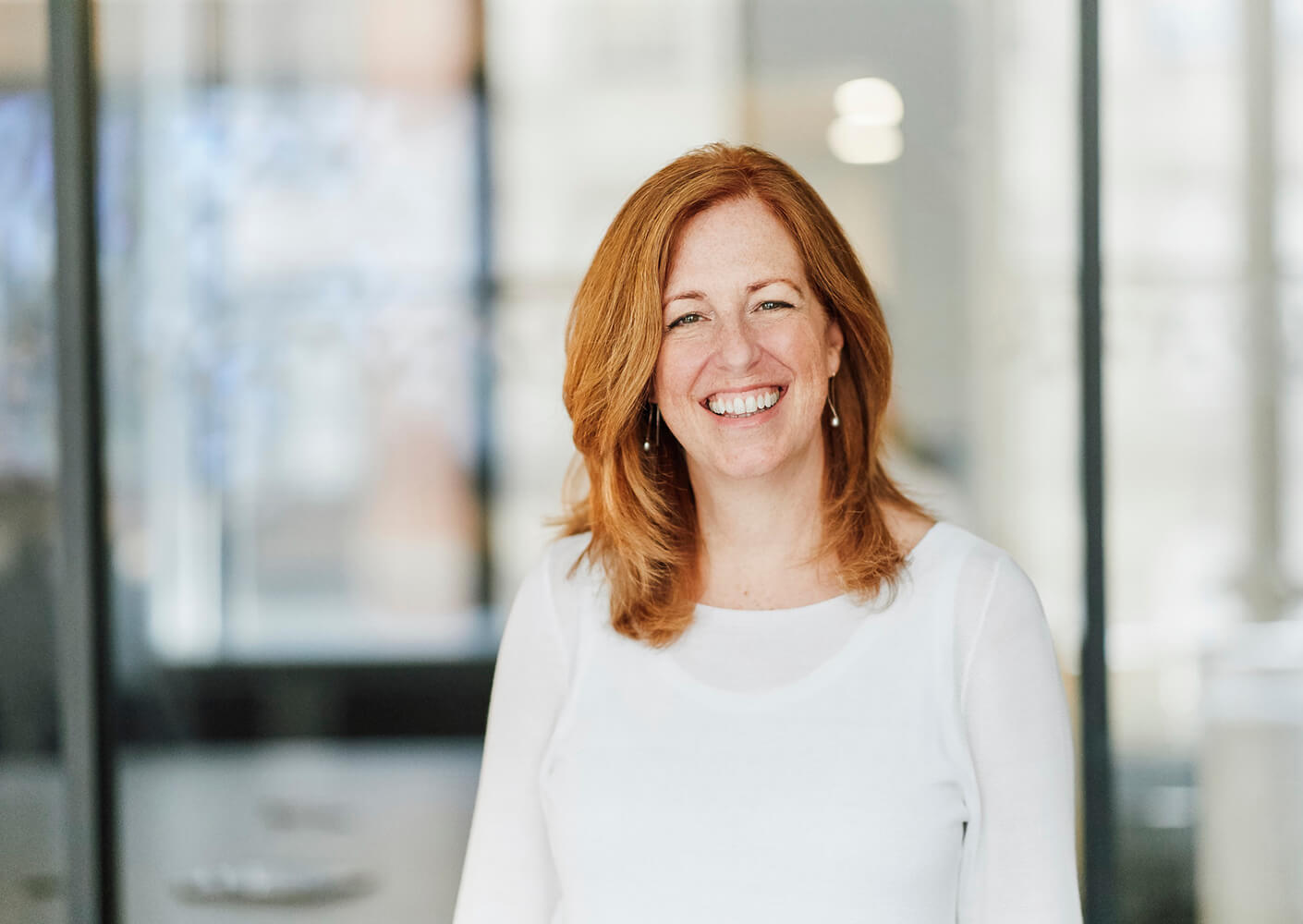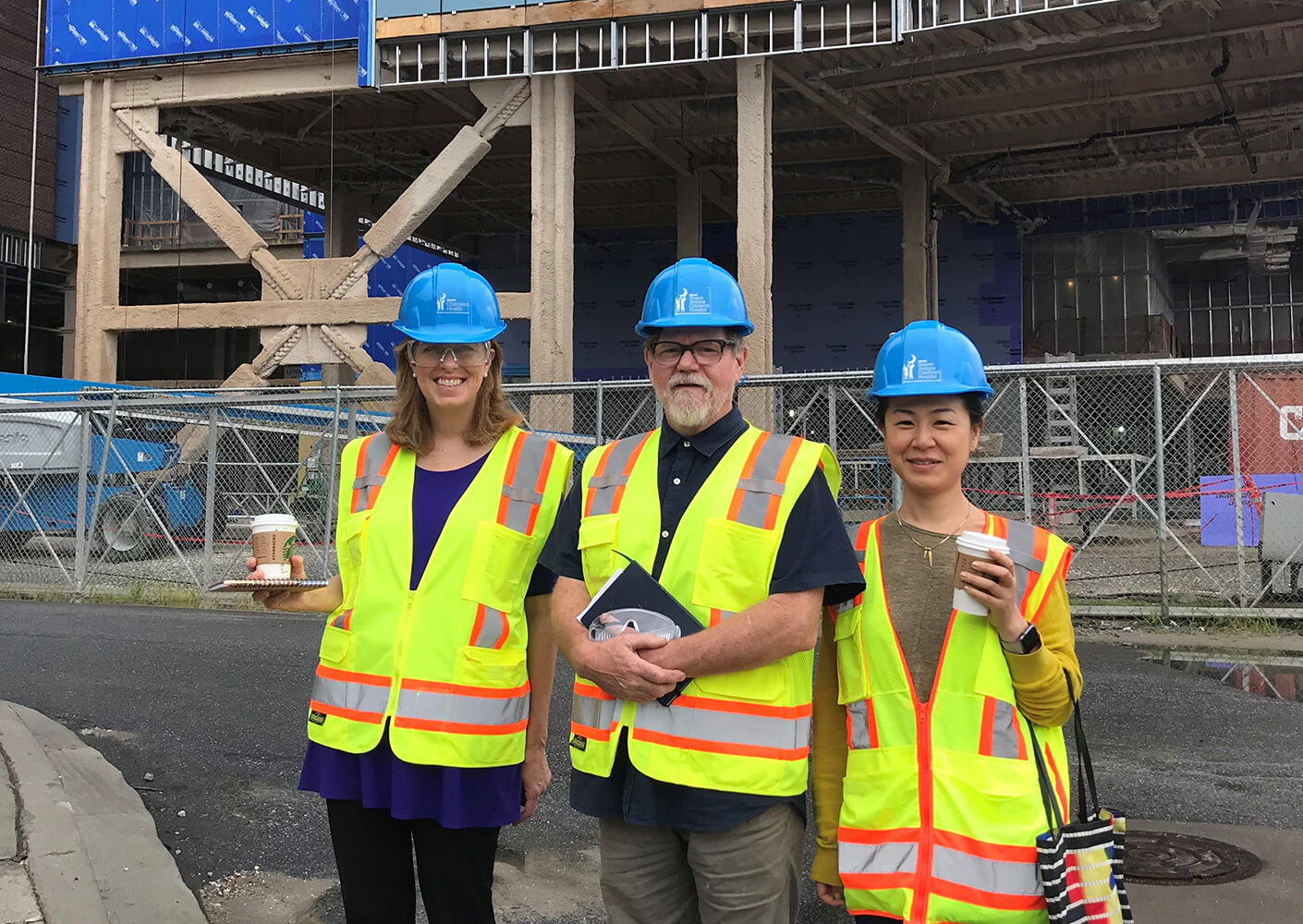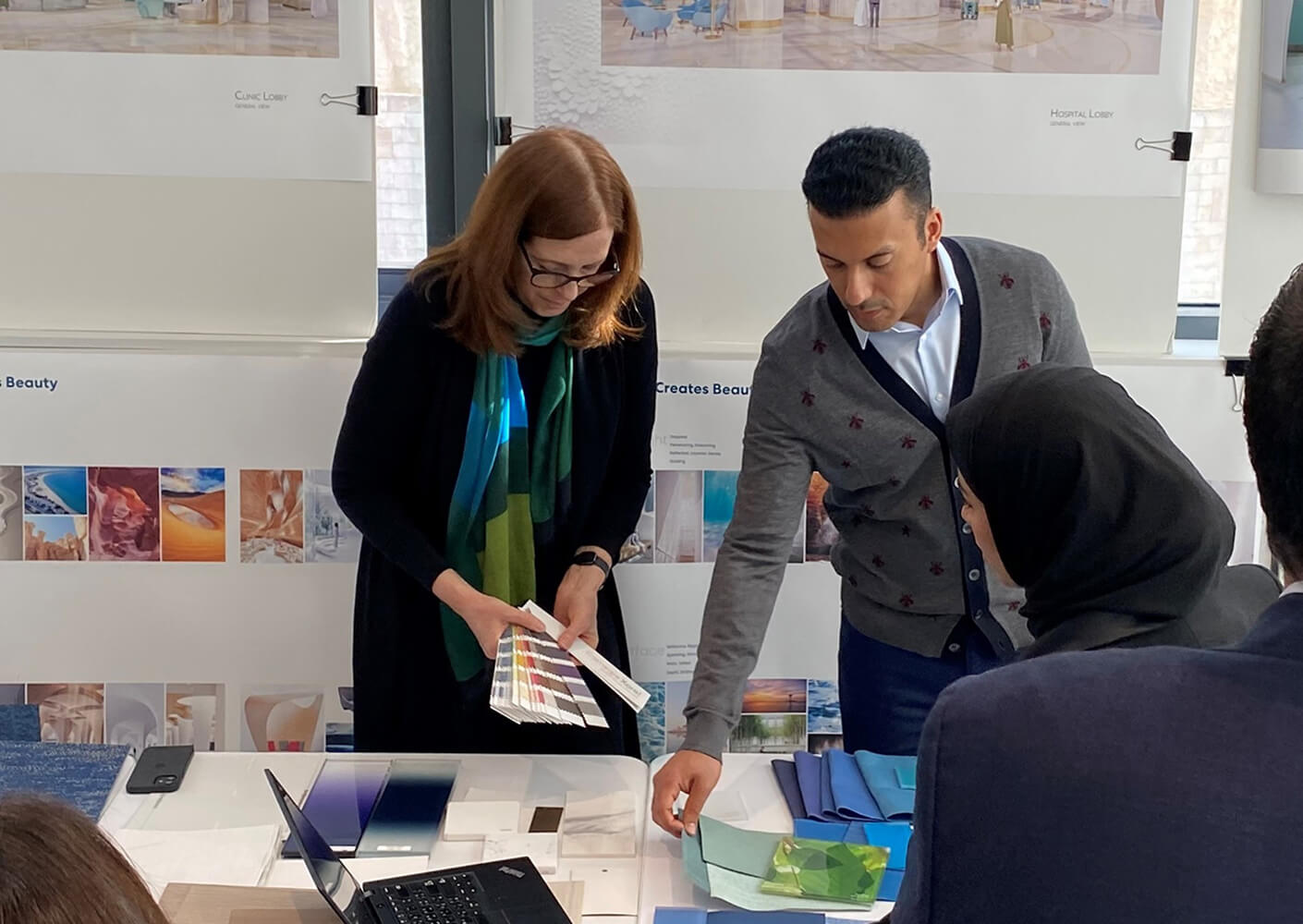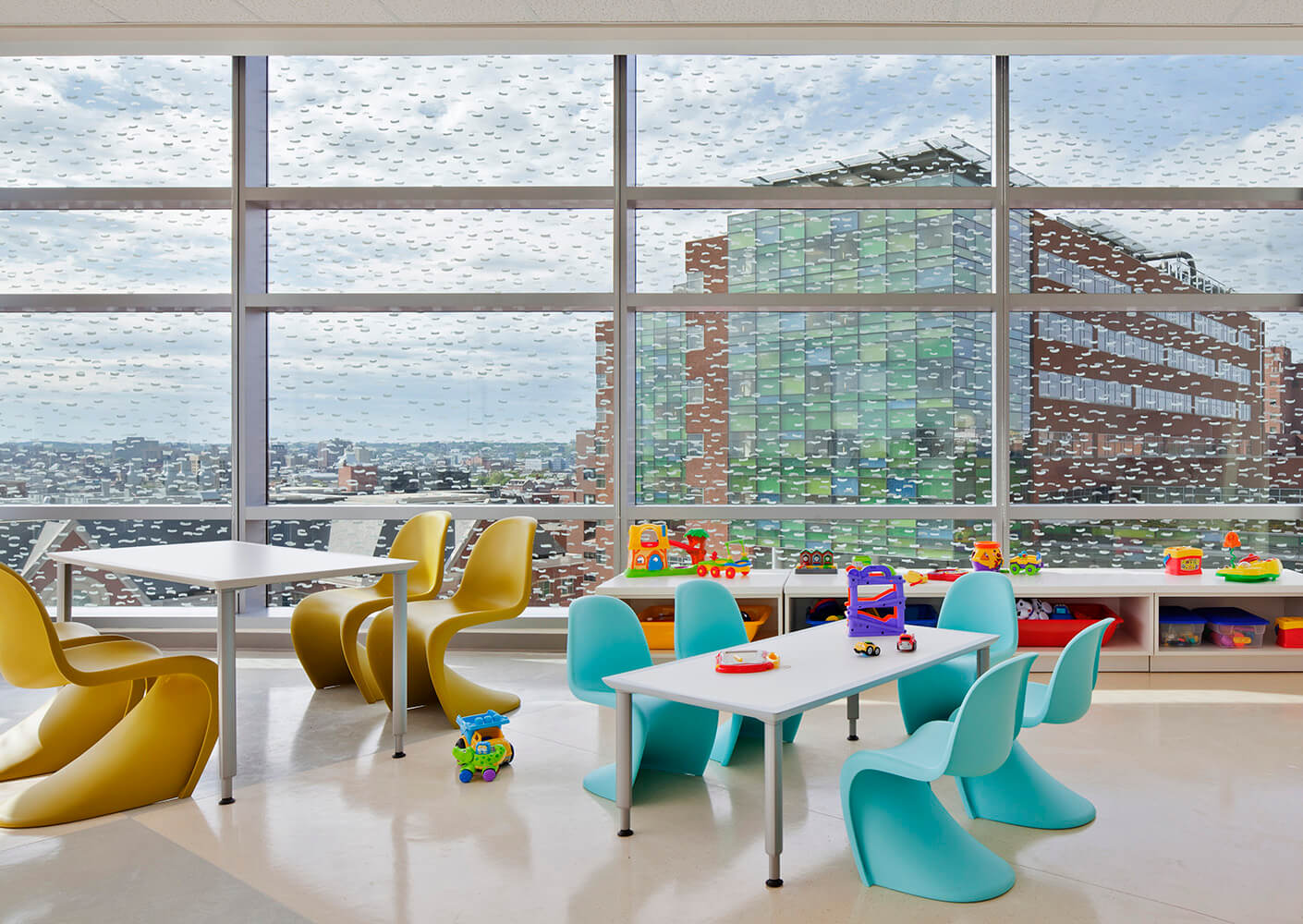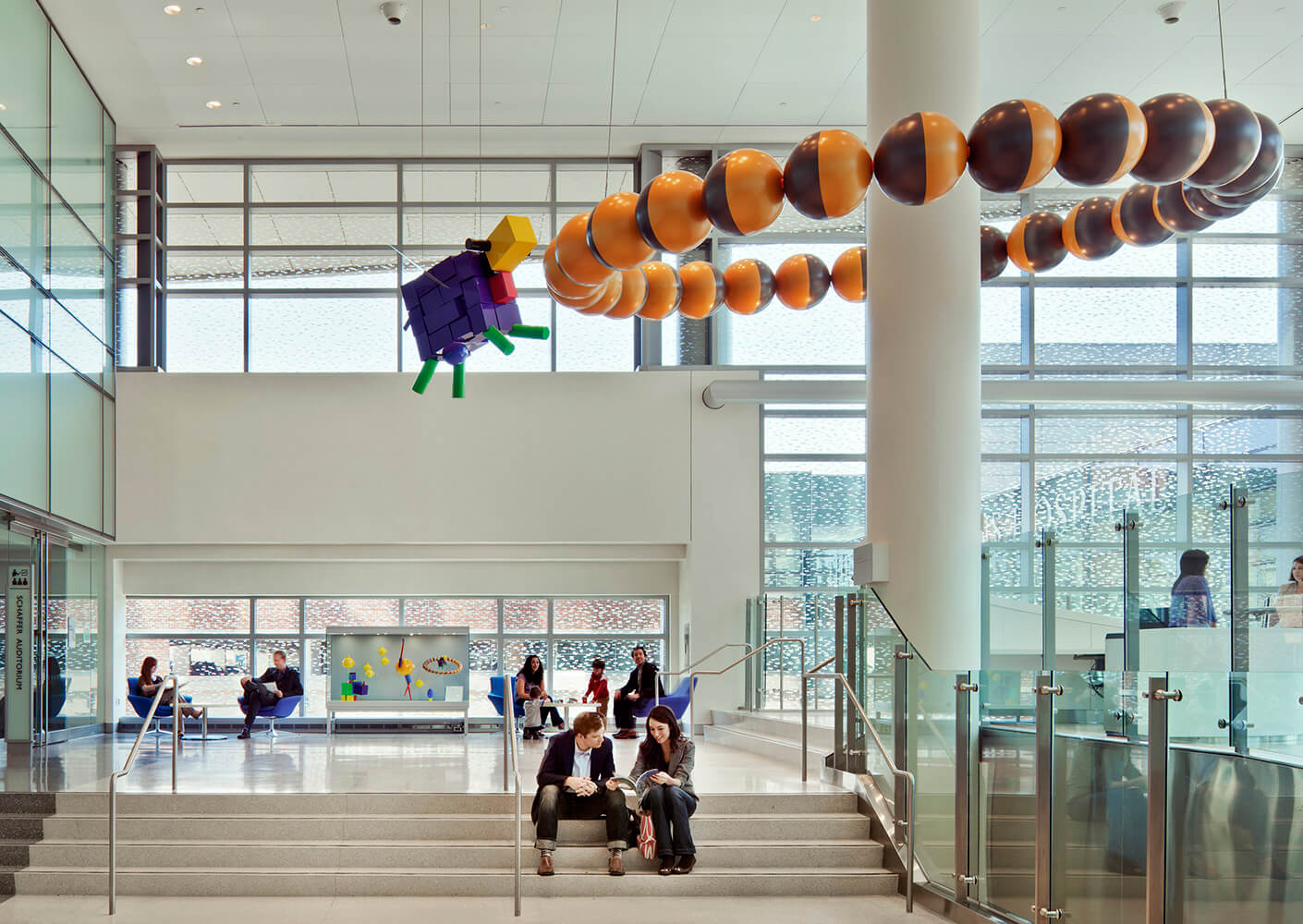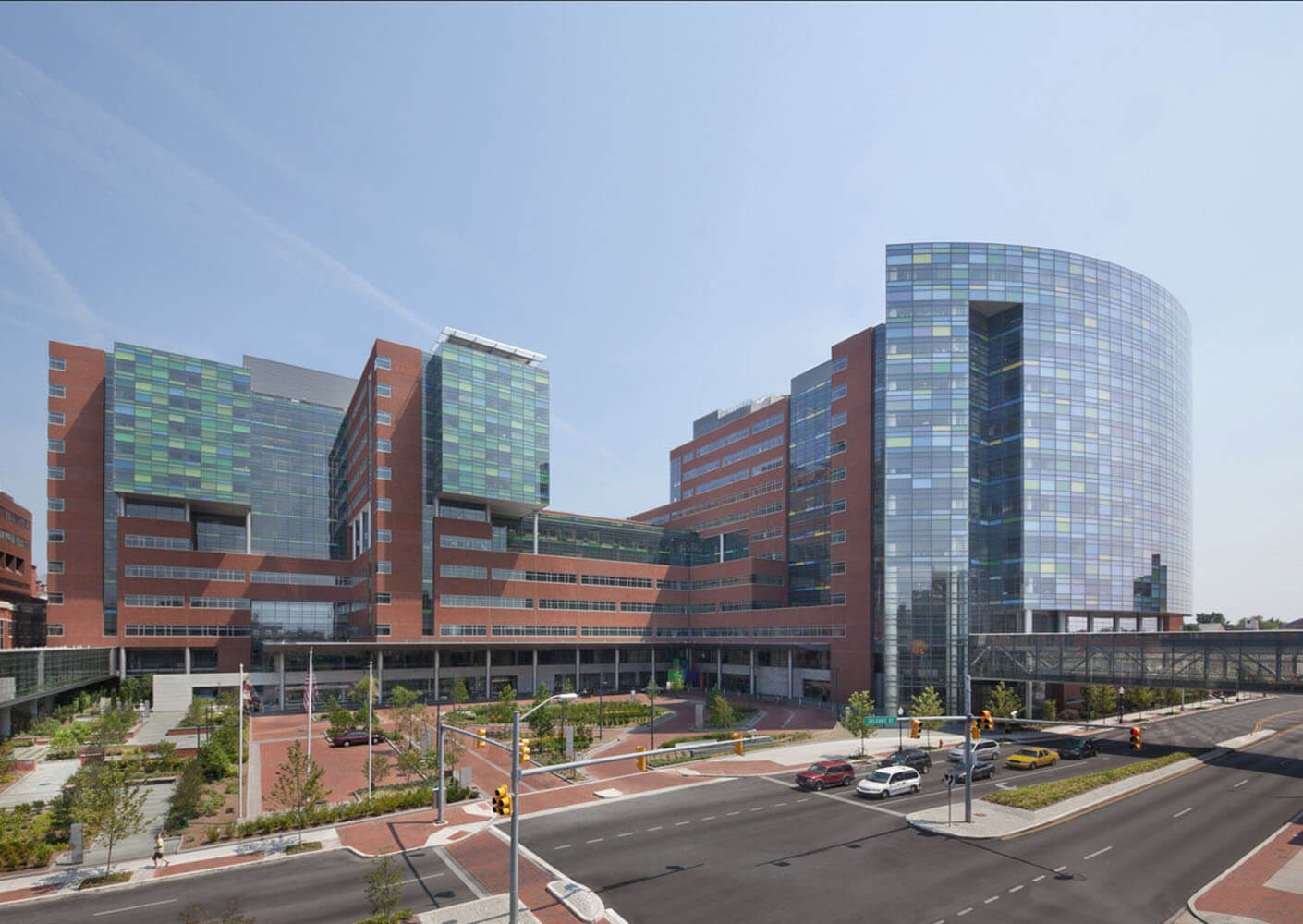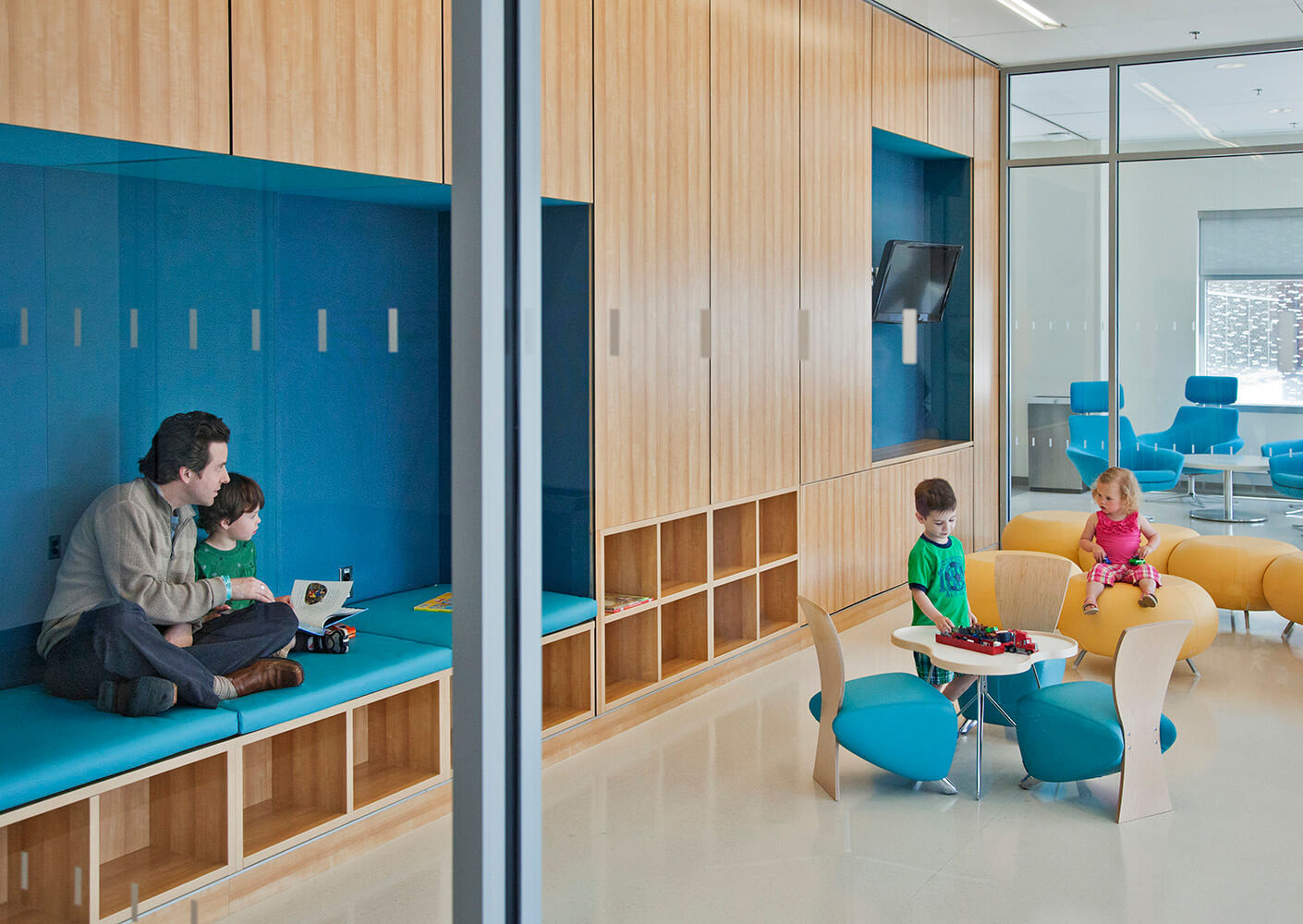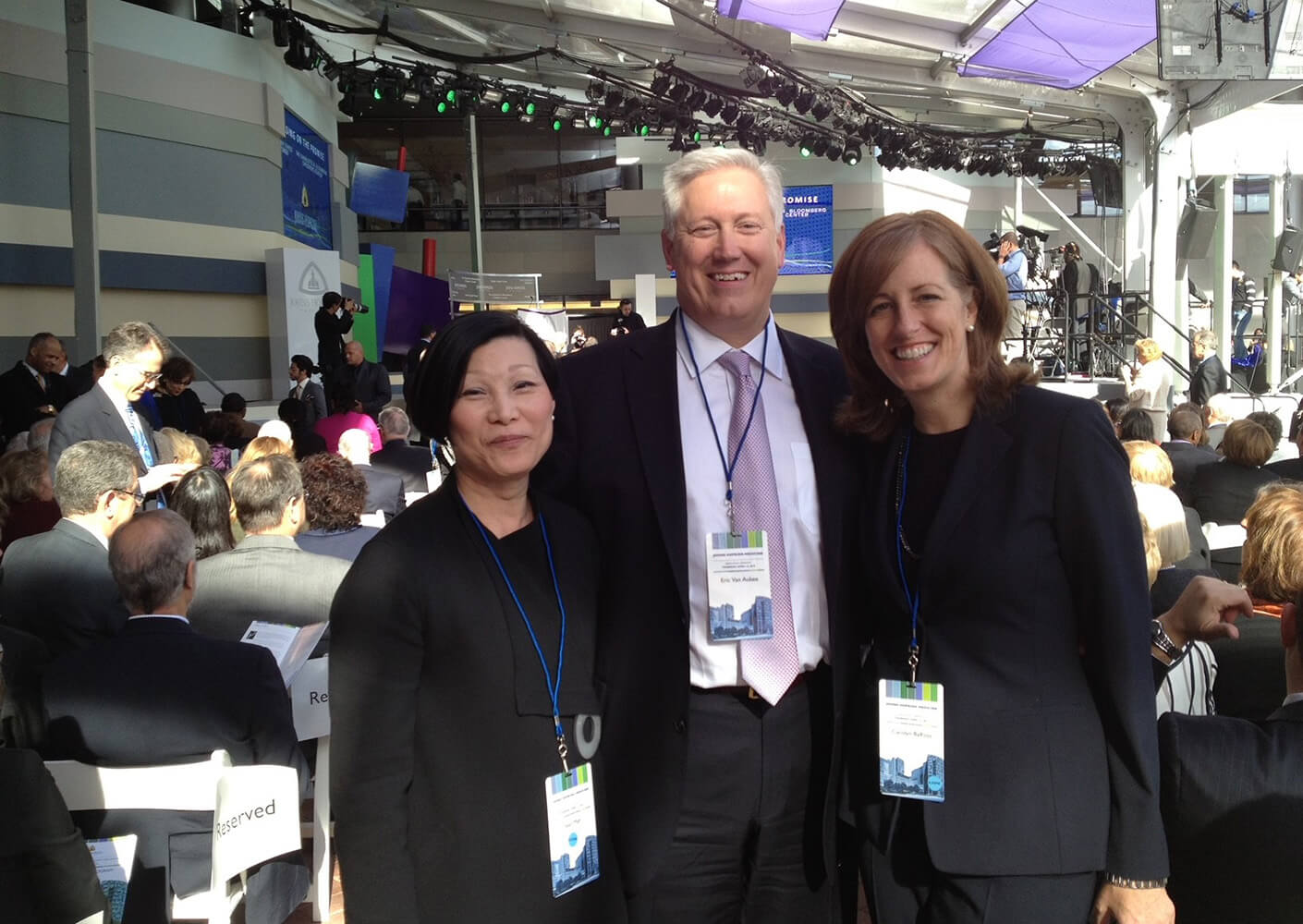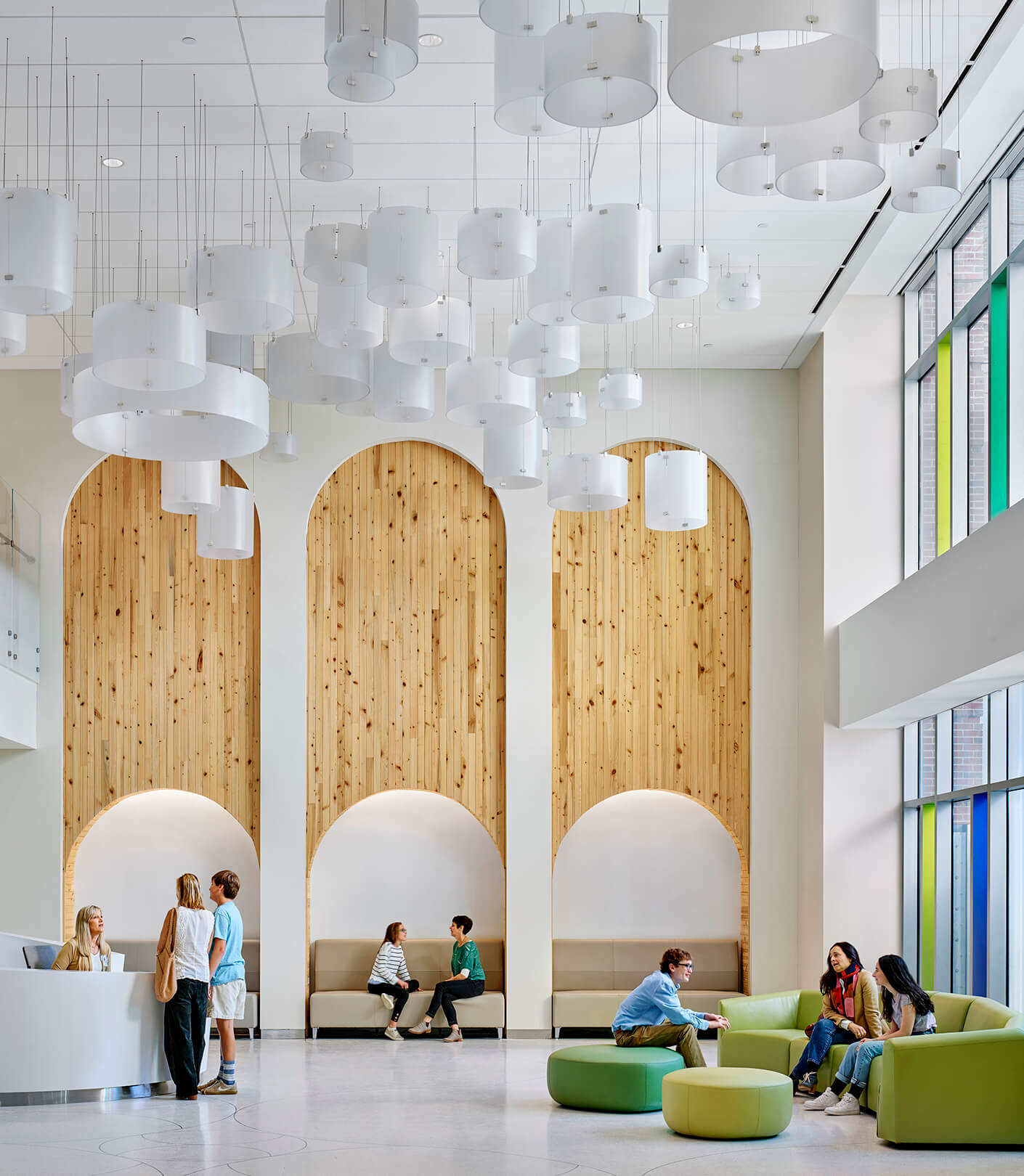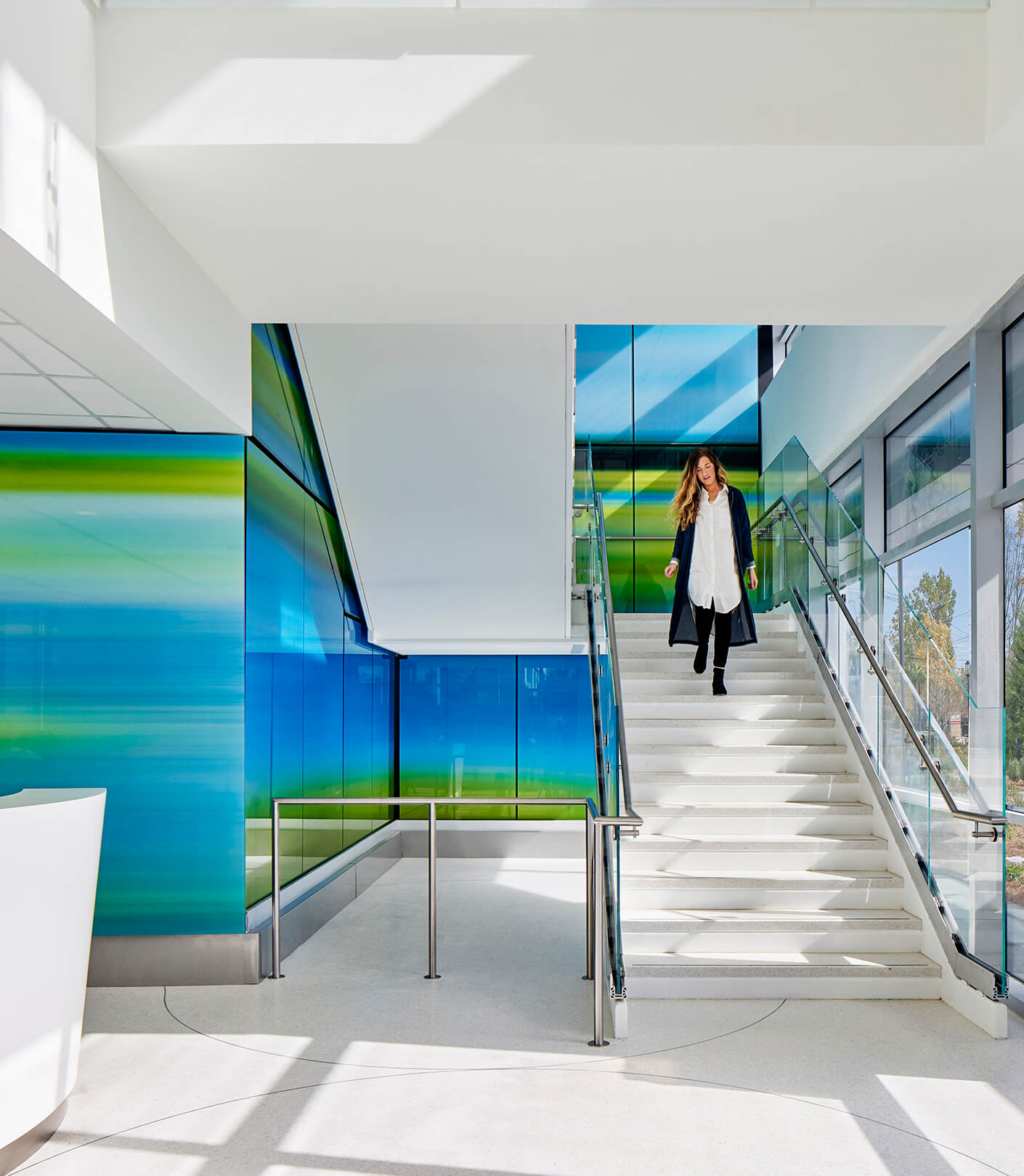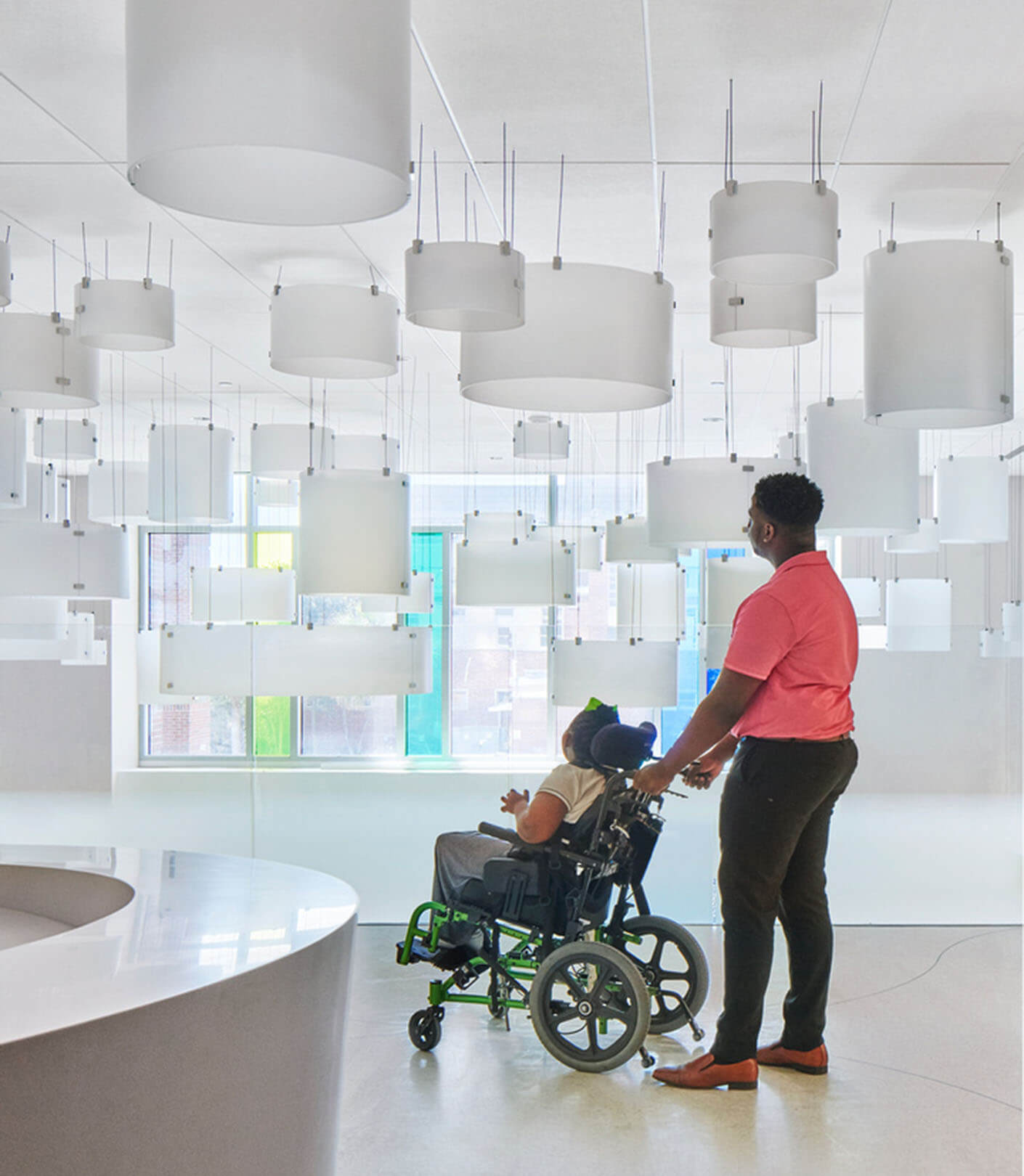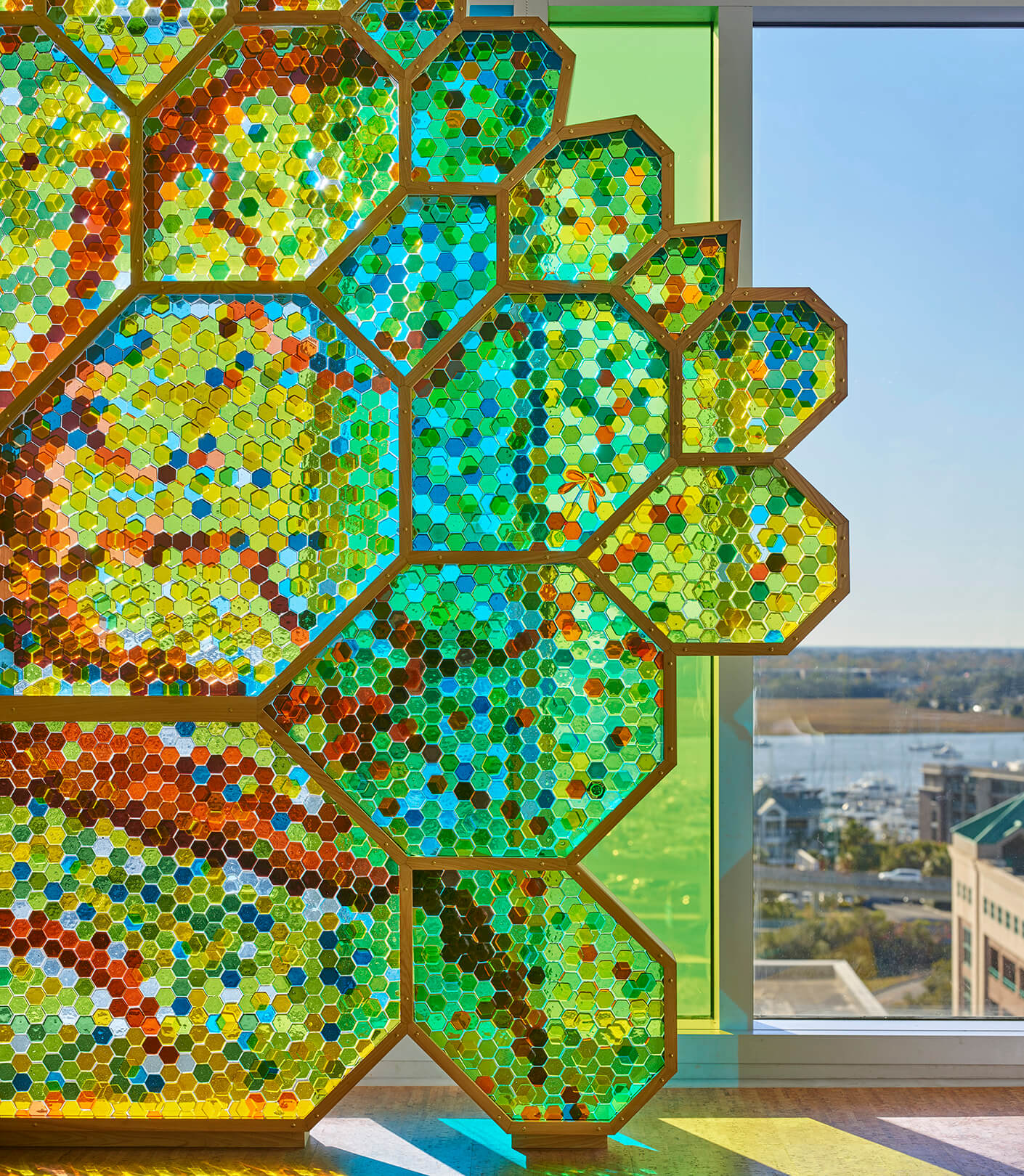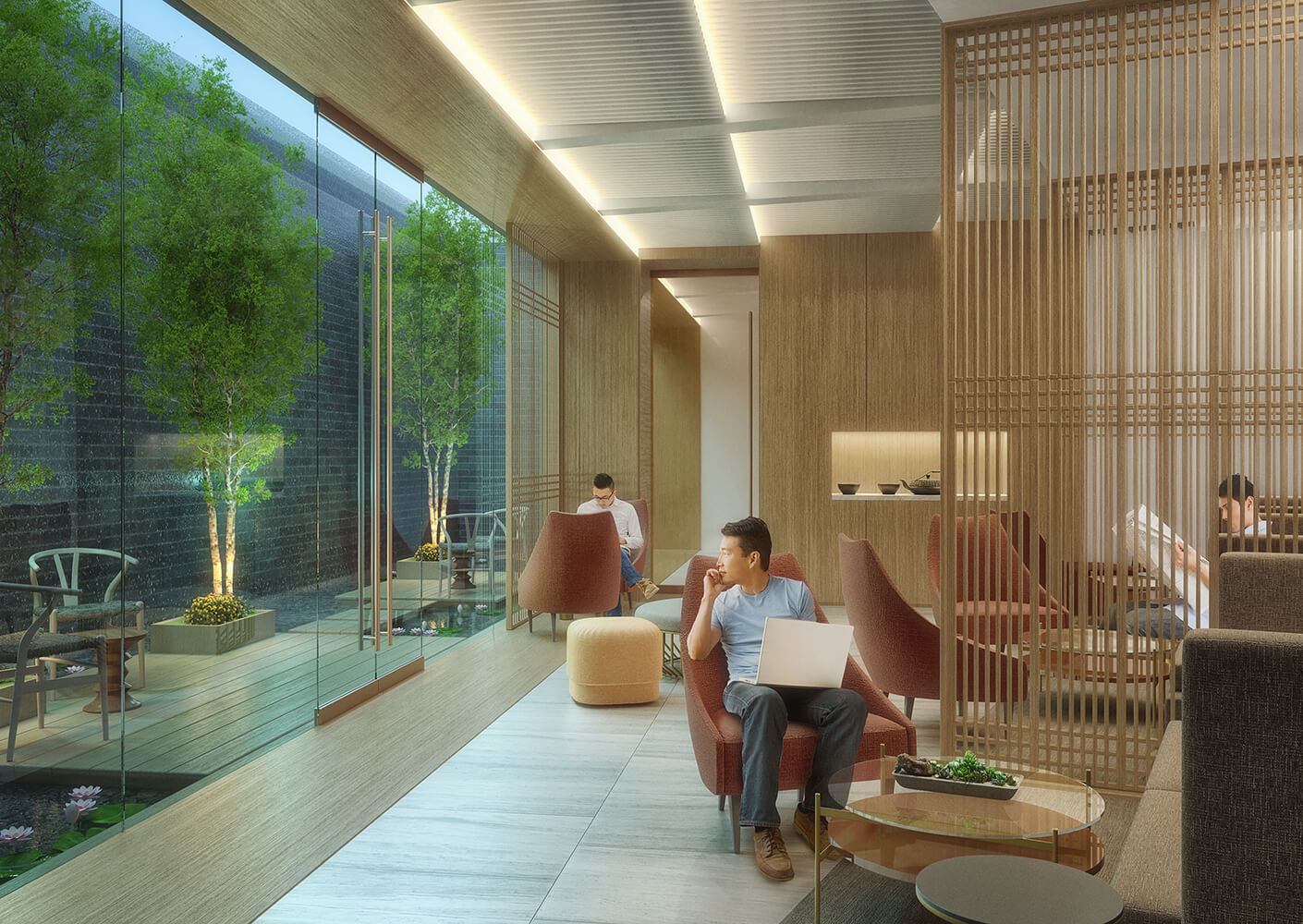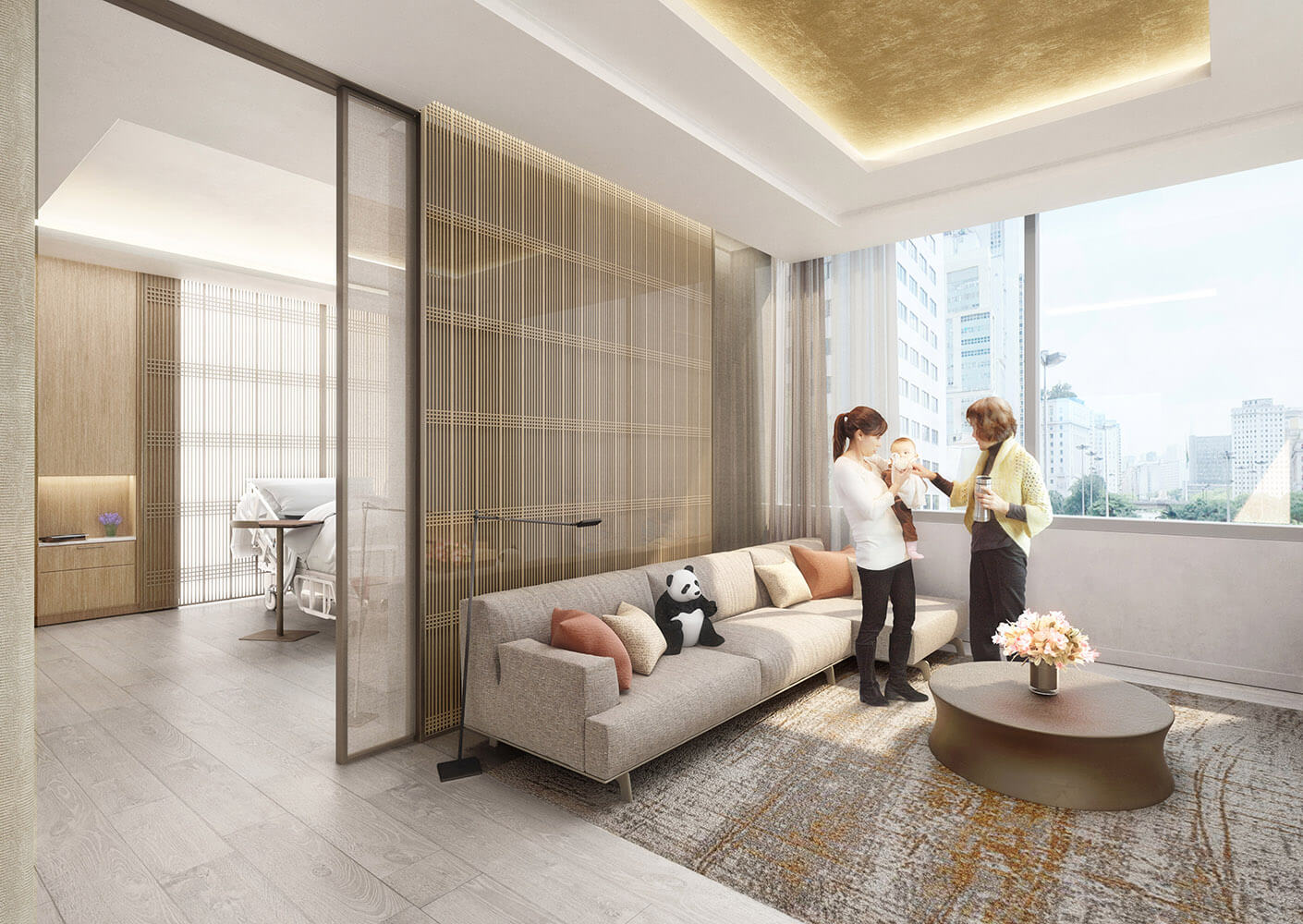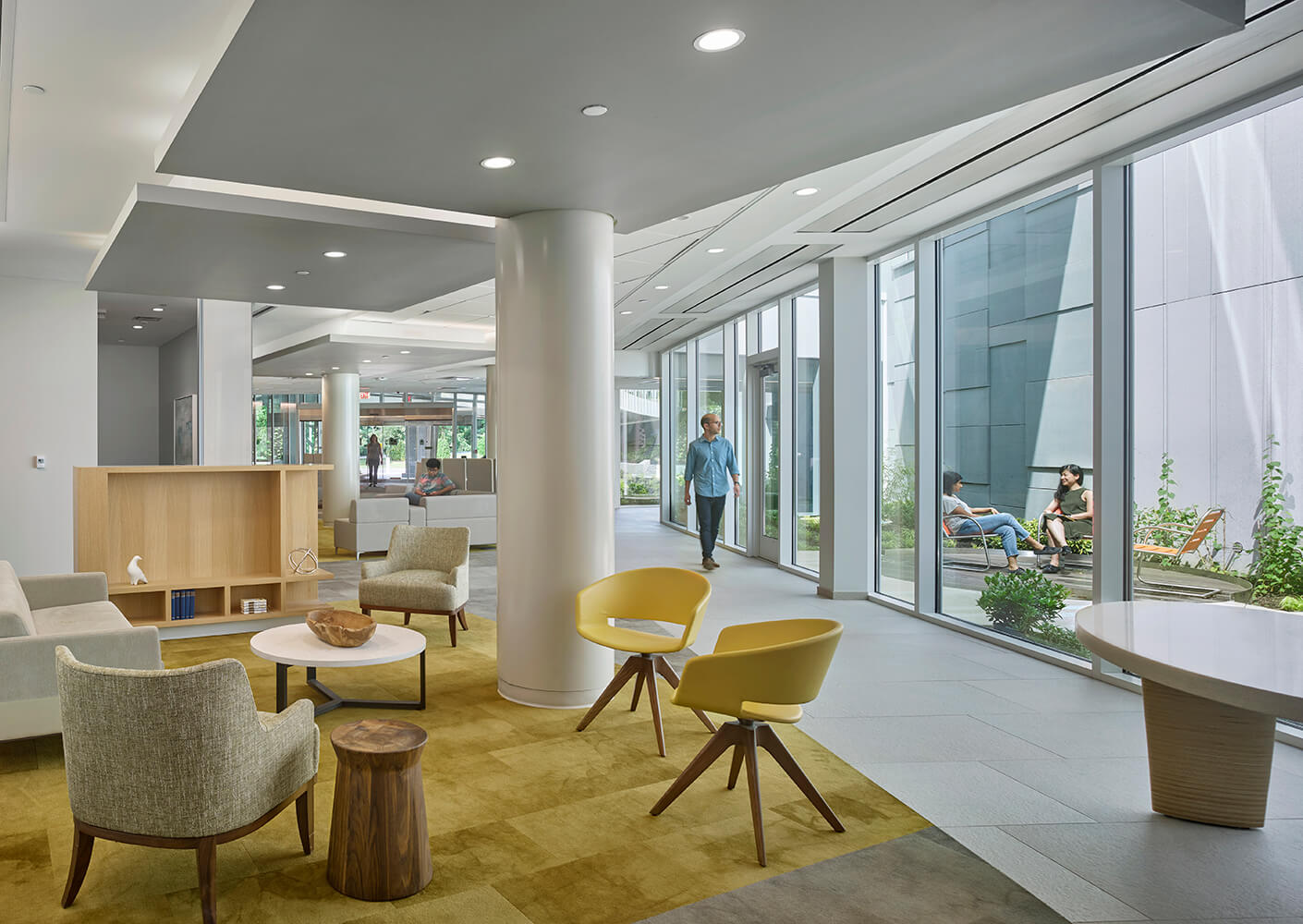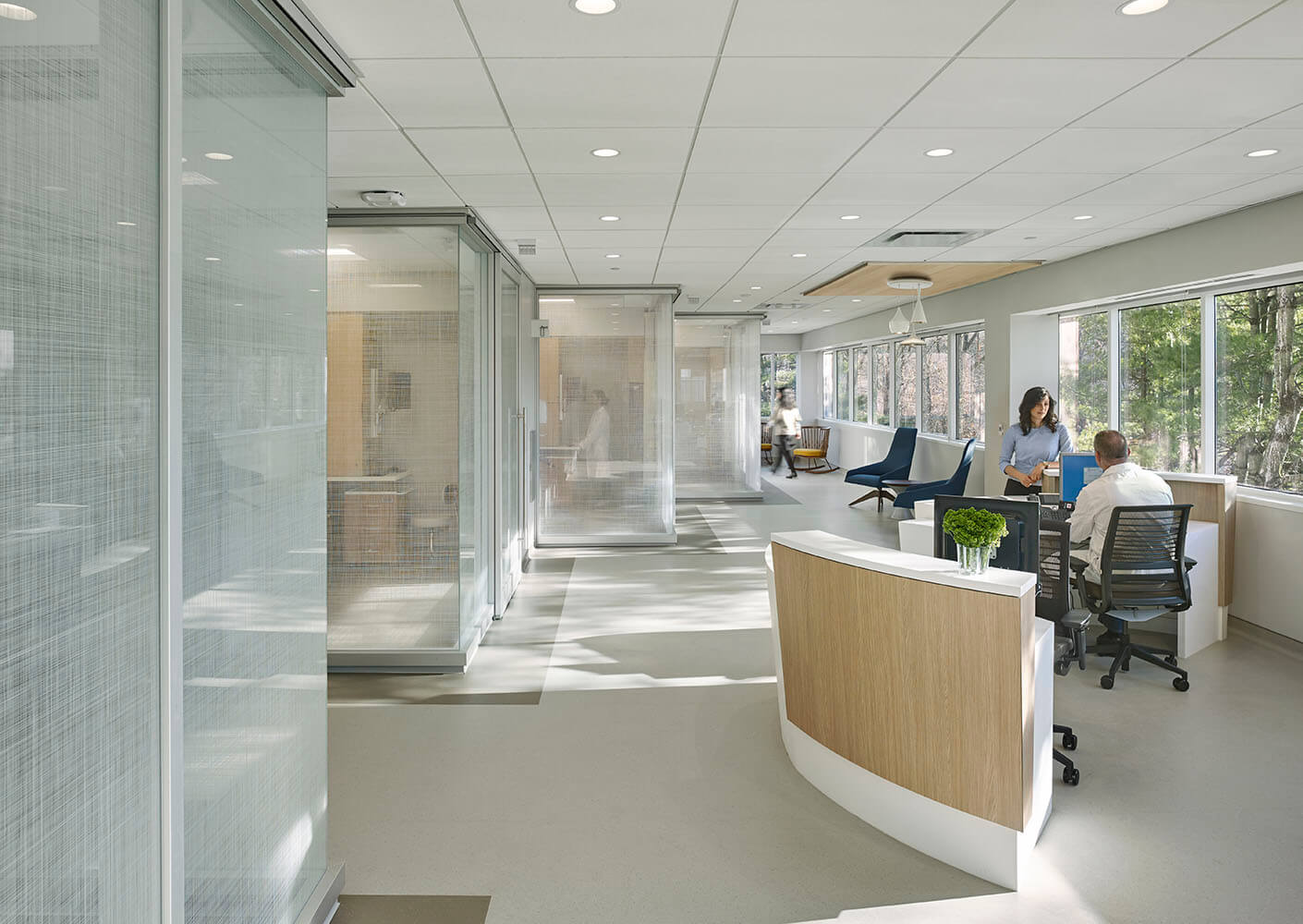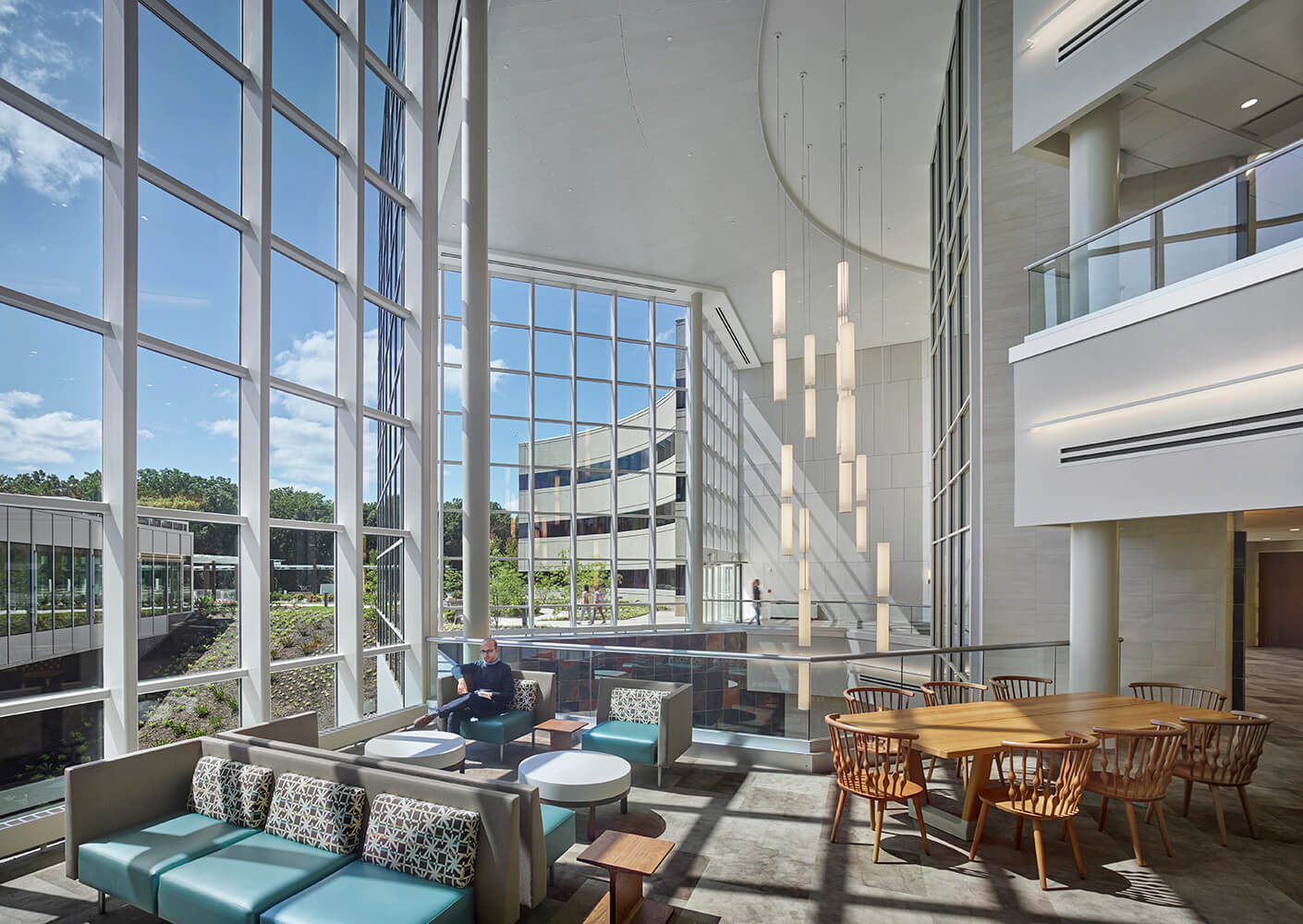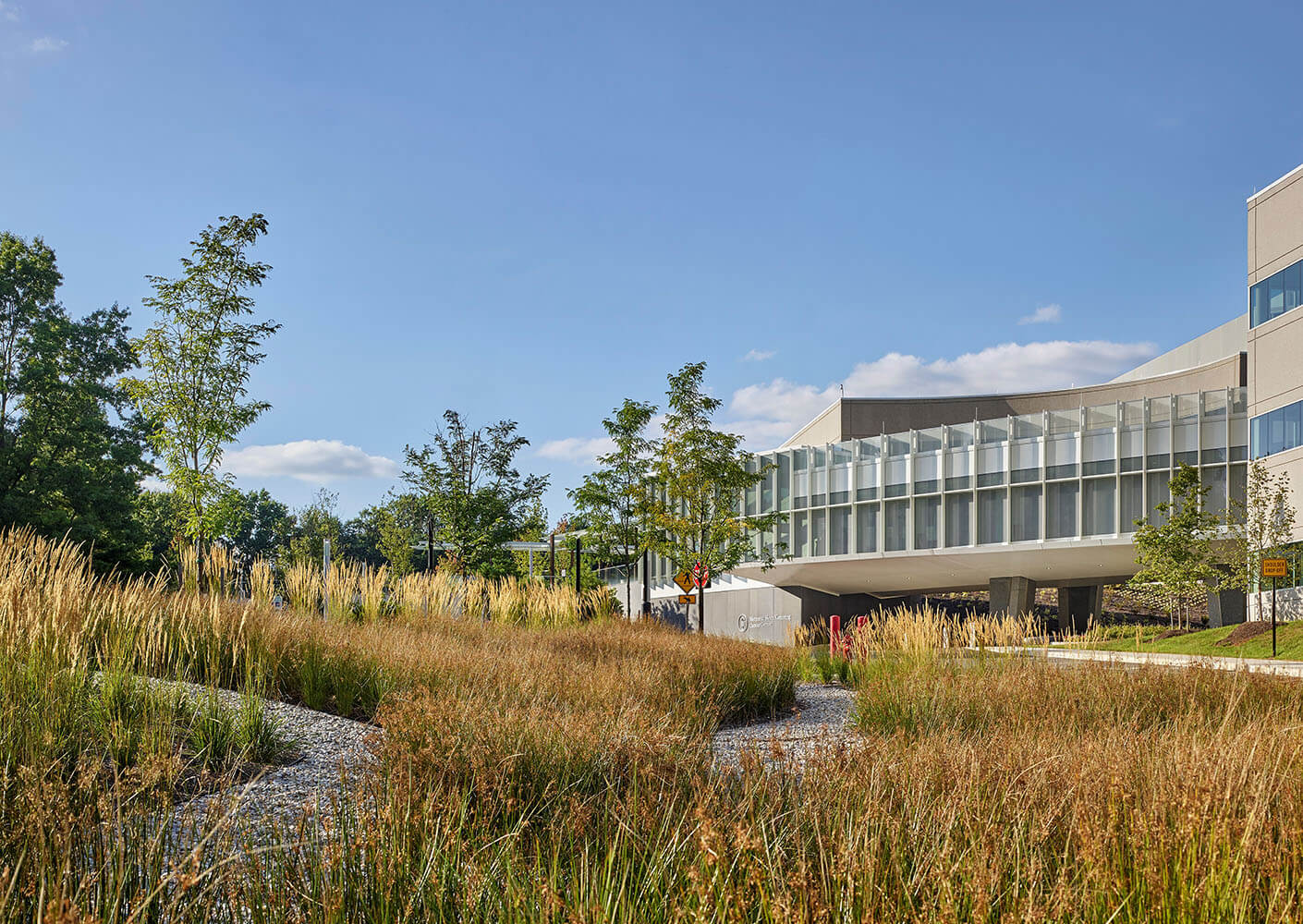Carolyn BaRoss: Shaping Excellence From the Inside Out
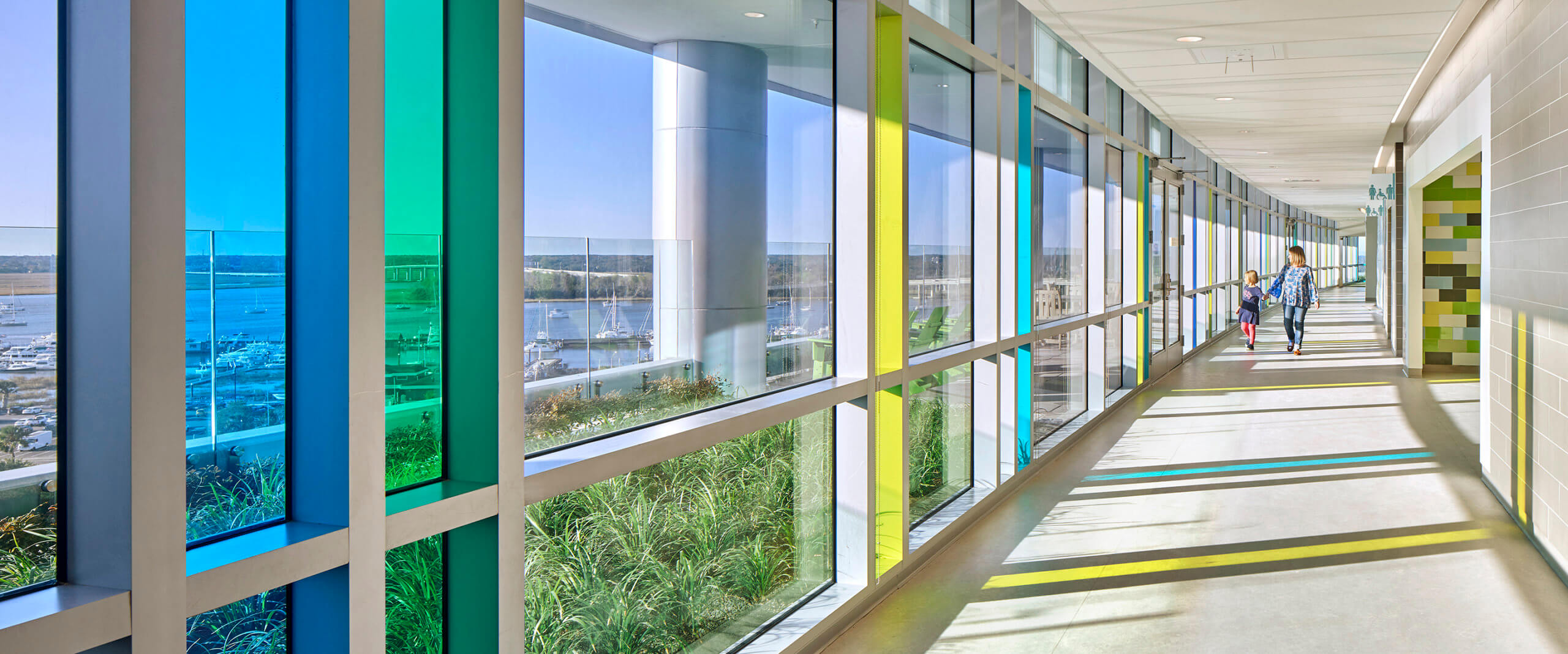
“I’m always imagining what the space will feel like from the inside,” Carolyn BaRoss says. The interior designer and lead healthcare designer, who’s been with Perkins&Will for 27 years, is describing how she begins to visualize new projects, whether it’s a 10,000-square-foot in vitro fertilization (IVF) clinic or an entire hospital. For her, the emphasis is on how humans will experience the space they’re in, both in the moment and—crucially for healthcare—long after.
BaRoss’ biggest current project is a workplace interior for a healthcare provider, featuring an incredibly complicated brief that required her and her team to understand exactly what different users and visitors would need. Designing for an academic medical center, she explains, means that they “need to create a place for not only clinicians, but also the entire universe of people who contribute to the functioning of a medical campus, from support staff to clinical directors to research teams.” Because it’s an academic center, doctors are seeing patients and also writing, collaborating, ideating, producing grants, and educating the next generation of residents and fellows. So BaRoss and her team are thinking—critically—about how design can “support the culture of academic medicine and create a place that works toward well-being.”
It’s one thing as a designer to come up with a fixed space in which people will mostly stay in their assigned spot. Picture an office with rows of desks, with each person knowing exactly where they’ll be going most days. But clinical medicine isn’t like that, so it’s a much harder space to conceptualize and create. “Many of these are itinerant workers,” BaRoss says of the people she’s been designing for. And yet, despite their constant motion between seeing patients in the hospital, taking notes in clinics, and working with researchers in analytical settings, as well as working both virtually and in person, “we need to enable them to work together and in a focused, more solitary environment.” As if that weren’t challenging enough, “how do you do that in a way that creates flexibility for the future?” BaRoss asks.
That’s where her experience comes in. BaRoss knows when to partner with colleagues, and when to rely on her own varied work history. She also knows how to always bring the focus back to essentials, like daylight, physical flexibility, and building spaces for collaboration and privacy. Her users are all mission-driven people, BaRoss points out, which makes her job feel like an extraordinary privilege. “They have a sense of community and identity,” she says. “Sharing knowledge among themselves is really important, so how do you honor that in a space?” She points out that design elements like demountable partitions, sit-stand desks, and acoustical materials all work together like “a big delicious puzzle.”
BaRoss visited her big workplace project recently and it was exactly as she’d imagined it. “I’ve already lived in these spaces in my mind,” she says. “When you walk into the building, you’ve already been there in your imagination; it’s like meeting an old friend in person for the first time.”
BaRoss now works primarily in healthcare. She’s always refining her approach, ensuring that the inside of a building fits its larger context and location. What drives her is the human experience, and that’s part of why she’s so uniquely suited to thinking about healthcare, which is, to many people, a terrifying environment. She thinks about family and visitors, and how they’ll be able to find their way when visiting their sick child recovering from surgery, just as much as she thinks about the clinical director of an ambitious medical trial looking over results in a quiet space. And it’s all that humanity and empathy combined with a keenly attentive mind and experience that inspire her every day.
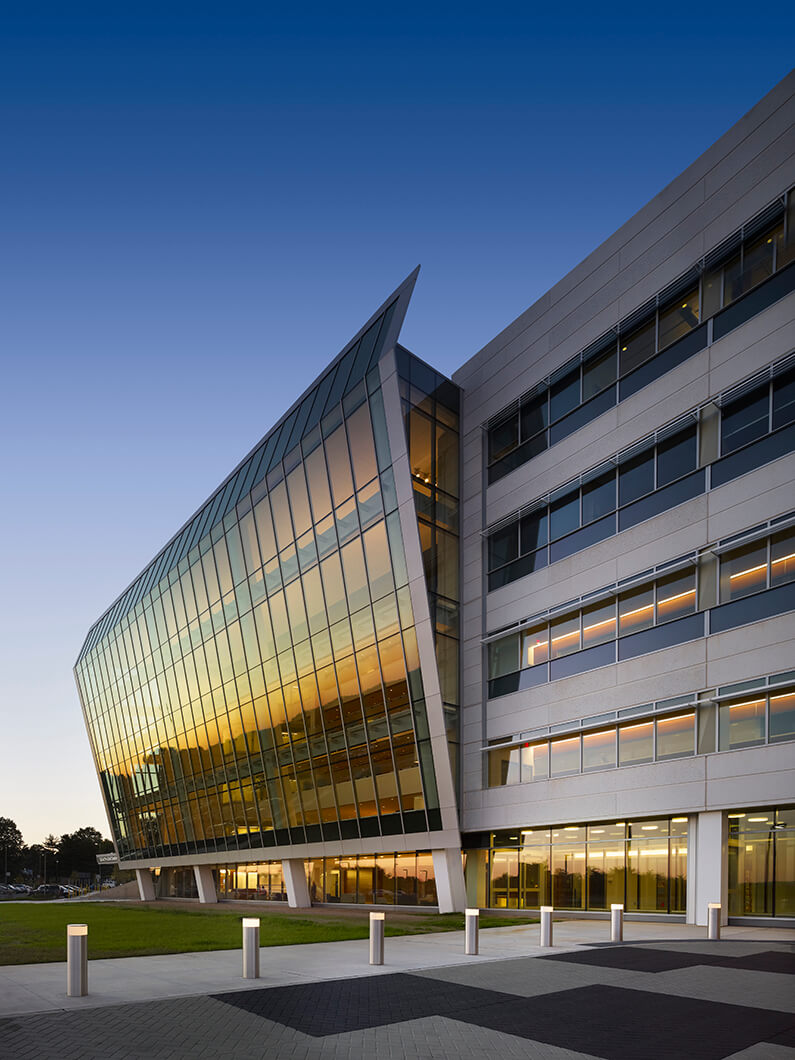
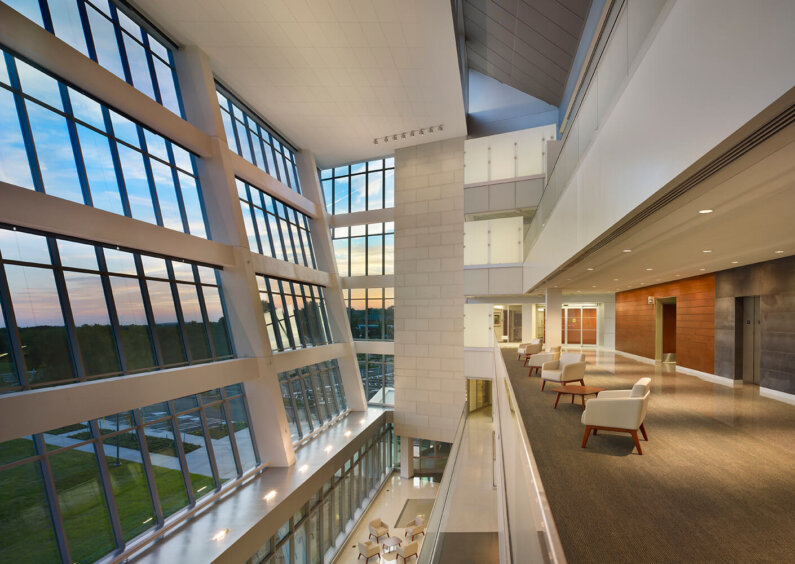
BaRoss was born and raised on Long Island and was always intrigued by New York City, encouraged to pursue fine arts. She went to UMass Amherst, where she took a number of foundation courses in art and art history. There, she discovered an interest in painting, and then took a design class with Arnold Friedmann, who founded the design department at the university and also taught interior design at Pratt for many years. “I just got it,” she says of that experience. Speaking more broadly of design, “I love the programmatic challenges, that you can create order or intentional disorder. I love that you can integrate this creative thing into how people experience the environment, and then you can create beauty.” Beauty, to her, is an underrated quality, one that gets lost in the shuffle, but for which there’s an entire body of evidence, particularly in the healthcare realm, that speaks to its importance.
Her first healthcare project was the Greenberg Pavilion at New York Presbyterian, which she worked on while at a previous firm. It was an experience that opened her eyes to how much more attention needed to be given to healthcare projects. At every turn, she found herself asking herself, why is this like this? Why does this have to look like this? Trying to answer those questions is part of what still motivates her today. For instance, does check-in, check-out, or complex treatment scheduling have to be a noisy, shared experience? Why? And how much better could it be if it were calm, quiet, and private?
BaRoss is energized by her role at Perkins&Will because of passion—her own, and that of the people around her, many of whom have become her friends. “Perkins&Will is very entrepreneurial,” she says. “You have to take on ownership and persevere, but when you work with other people, it ends up enriching the experience for everybody.”
